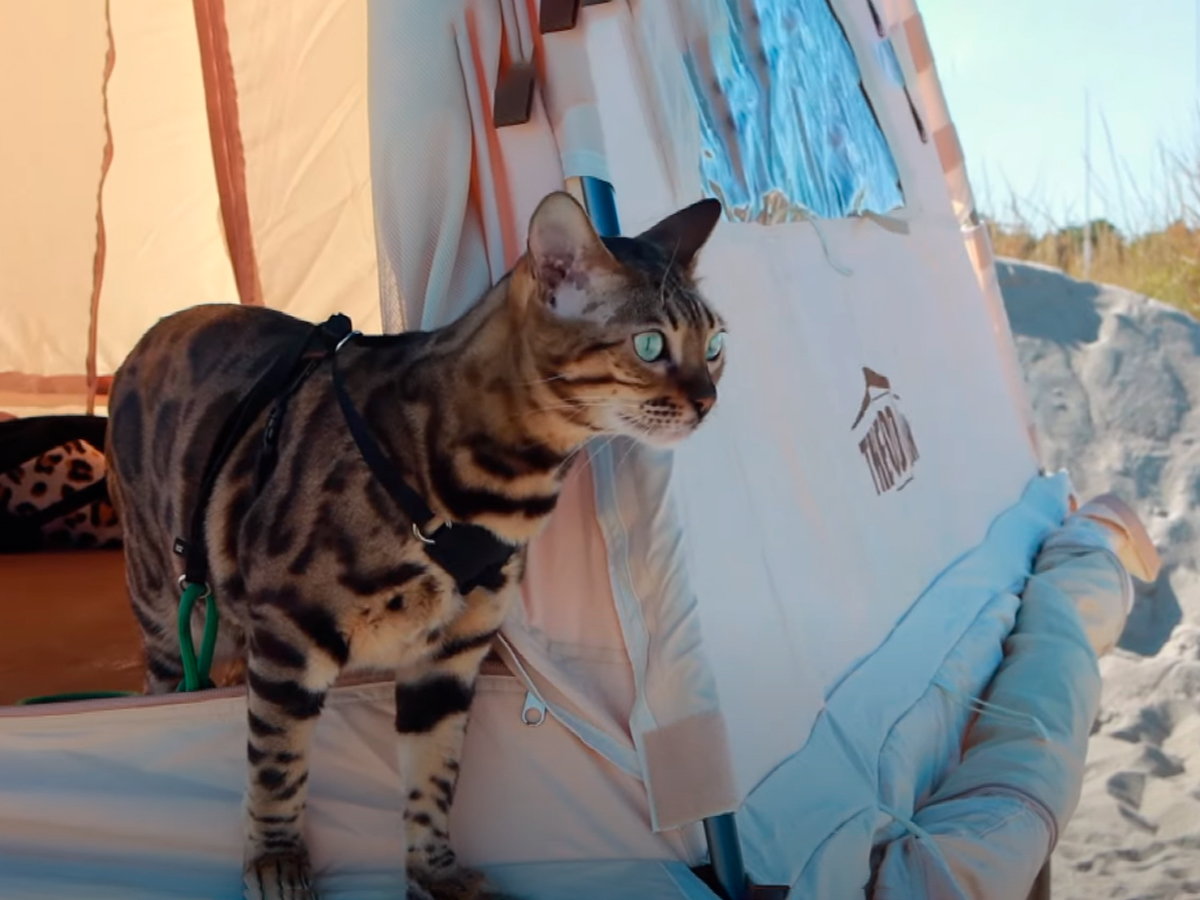How To Camp With a Cat: 7 Situations [Full Solution]
One of our first camping trips comes to mind. I had failed to set up a proper camp for my cat, so she was exposed to the harsh realities of the outdoors. Dehydration, heatstroke, and pests such as fleas and ticks were all genuine threats.
It was a wake-up call for me, and I realized that rushing into camping without adequate preparation might lead to injuries or even the loss of my beloved pet.
Now, I make sure my cat is well-prepared for our camping adventures. I ensure she is leash-trained and up-to-date on her vaccinations. I pack essential supplies like a harness, leash, pet tether, GPS collar, travel bowls, food, water, and a comfortable cat travel bed. I always check that our chosen campsite is pet-friendly and set up a safe area for her.
In this blog post, I will share some tips for camping with a cat. Suggestions on planning, preparing, and traveling safely while camping with my cat.
How To Camp With a Cat: 7 Tips
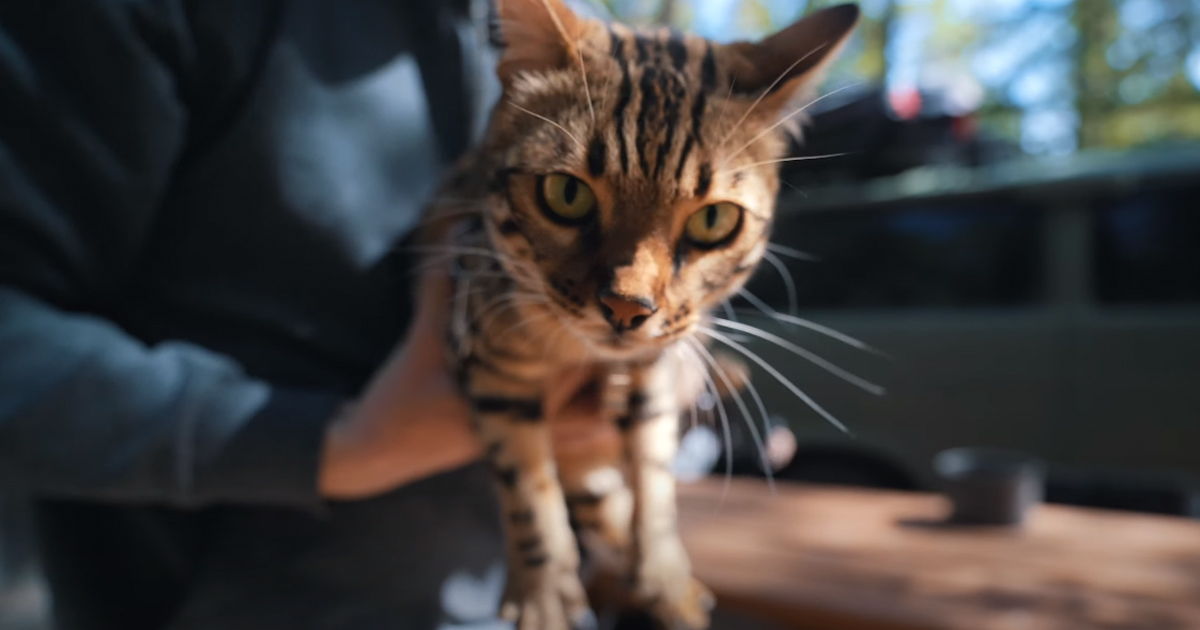
Camping with my furry friend has been an exciting adventure filled with exploration and bonding. To master the art of camping with my cat, I’ve had to plan thoughtfully and understand their needs for a safe and enjoyable outdoor experience. It’s been a journey of learning and adapting, but the joy of sharing these moments with my cat has made it all worthwhile.
Preparing for the Trip
Bringing my cat for a camping trip required some preparation and planning. Whether I was a new pet parent or a seasoned adventurer, there were essential steps I took to ensure my cat’s safety and well-being. Here are some tips I followed for camping with my cat:
Getting My Cat Comfortable with the Carrier
If I plan to take my cat on a camping trip, I must get them comfortable with the carrier. Here’s how I can help my cat tolerate the airline:
- My goal is to improve my cat’s career by placing it in an area my cat frequents and gradually encouraging them to investigate it.
- The carrier will have familiar scents like blankets and toys my cat loves.
- Treats or praise will be given to my cat when it enters the carrier.
- I’ll also take practice trips around the neighborhood to get my cat used to the routine.
Choosing the Right Camping Gear for My Cat
My cat’s comfort and safety are my top priorities while camping. Here is some essential camping gear that I should pack for my feline friend:
- My cat needs a comfy and durable carrier for transportation, a sturdy leash and harness, a cozy and warm bed to sleep in, and a cat-proof tent with enough room and ventilation.
- I’ll also bring toys, scratching posts, and a litter box to keep my cat entertained and comfortable.
Bringing the Right Food and Water Supply
I must bring sufficient food and water for my cat during the camping trip. Here’s how I can pack enough food and water for my feline companion:
- I plan to pack enough food for the entire trip, including extra food in case of delays.
- I will bring a supply of fresh water in a sturdy container.
- I will consider bringing wet or dry food that can be mixed with water.
- I’ll store the food and water in a secure, dry place to prevent contamination.
Exploring the Camping Location Beforehand
Exploring the camping location beforehand can help me and my cat better prepare for the trip. Here are some helpful tips for exploring the camping location before we set off:
- Before we travel, I will research the camping area’s pet travel rules and regulations.
- I intend to find a suitable campsite for my cat to roam freely.
- I will take him on brief excursions outside to familiarize my cat with the outdoors.
- I’ll plan a cat-friendly itinerary with activities my cat can join in, including hiking, bird watching, and relaxing in the sun.
Traveling with My Cat
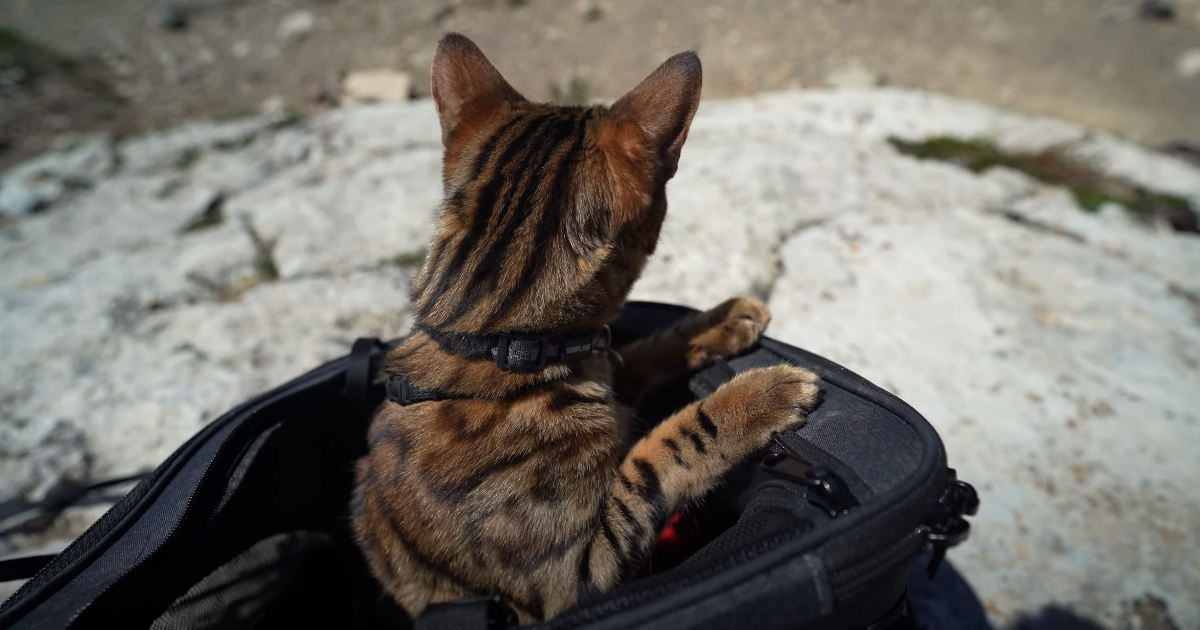
Camping with my cat can be a fun and rewarding experience, but ensuring my furry friend is comfortable throughout the trip is essential. I consider several key factors, from transportation to pit stops and motion sickness. Here are some tips I follow to help keep my cat comfortable while camping:
Choosing the Right Mode of Transportation
- When driving to my camping destination, ensuring my cat is comfortable in the car is essential. I consider using a cat carrier or travel crate to keep my cat secure and prevent them from roaming around the car.
- I choose a cat-friendly mode of transportation, such as a vehicle with a smooth ride and comfortable seating.
Making Pit Stops for My Cat’s Needs
- Cats have specific needs regarding using the bathroom and staying hydrated. I plan my route and make frequent stops for my cat so that he or she can stretch his or her legs, use the litter box, and drink water during the ride.
- I bring my cat a portable litter box and plenty of fresh water.
Avoiding Motion Sickness in Cats
- Many cats get motion sickness while traveling, making them anxious and uncomfortable. I talk to my veterinarian about potential remedies, such as anti-nausea medication or natural treatments like ginger.
- I consider using a calming pheromone spray or diffuser to help my cat relax during the trip.
Setting Up Camp for Your Cat
Camping with my feline friend has been a fun and rewarding experience for both of us. Before embarking on this adventure, I ensured I chose the perfect campsite for my cat. Here’s how I picked the right location and set up camp
for my cat:
Choosing the Right Campsite for My Cat
Choosing a suitable campsite for my furry friend was essential to keep them comfortable and safe during our trip. Here are some things I considered when selecting a campsite for my cat:
- A pet-friendly campsite was what I was looking for.
- My campsite was quiet, away from noisy neighbors.
- Checked for nearby water sources and shade trees.
- I avoided campsites near busy roads.
Creating a Comfortable Sleeping Area for My Cat
One of the most important things I considered when camping with my cat was their sleeping area. The following tips helped me create a comfortable sleeping spot for my feline:
- I brought a cat bed or blanket they are familiar with.
- My sleeping place is warm and dry.
- I kept their sleeping area in a quiet spot away from the campfire.
- I provided a roof or overhead cover to protect them against rain or dew.
Keeping My Cat Safe from Wildlife
Wild animals such as coyotes, raccoons, and snakes could threaten my cat while camping. The following tips helped me to keep my cat safe from wildlife:
- I kept my cat indoors or within sight.
- My cat leash or carrier was my companion when exploring outdoor areas.
- Food and water were kept in a secure location for my cat.
- I kept a first aid kit handy in case of emergencies.
Setting Up Scratch Posts and Toys for Entertainment
Camping with my cat wasn’t all business; entertainment also significantly kept my pet happy. Here are some ideas I used to keep my cat entertained while camping:
- The toys I brought included laser pens and string, which were interactive.
- They can climb scratch posts or trees I set up.
- Our campsite has a designated play area.
- I provided treats as a reward for good behavior.
Tips for Train Your Cat to Walk on a Leash When Camping
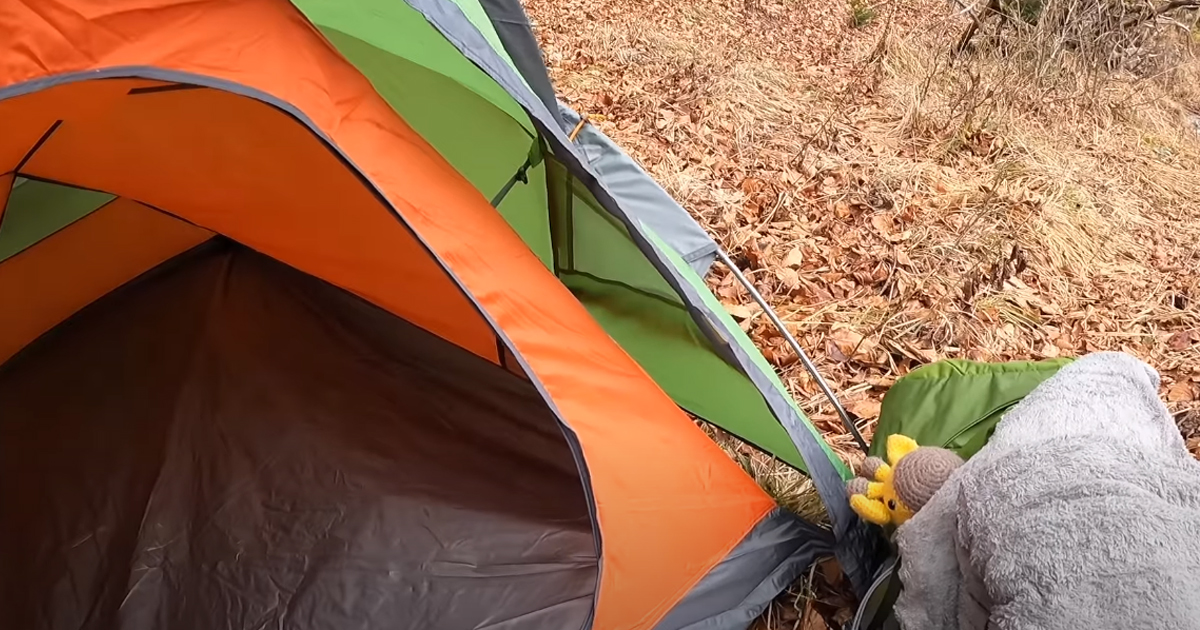
Training my pet to walk on a leash has been enjoyable and rewarding. It allows my cat to explore beyond our campsite while ensuring their safety. Here’s how I trained my kitten to walk on camping trips:
- I chose the right leash and harness: A harness that is too loose may fall off, while a harness that is too tight may cause discomfort. I found a good harness that fits snugly and allows my cat enough room to move around.
- I introduced the harness slowly, allowing: them to smell and explore it before putting it on my cat. I encouraged them with treats and praise and tried briefly placing the harness on before removing it.
- I started in a familiar environment: I began training my kitty in a safe environment, like our
home or garden. This helped my cat get used to the sensation of the harness and leash before venturing further into the field. - I practiced walking: I started walking with my cat indoors or in a fenced area, allowing them to get used to being on a leash. I rewarded them with treats and praise when they walked calmly beside me.
- I ventured out: I took them on short walks outside when my cat was comfortable with the harness and leash. I started with quiet, familiar areas and accumulated the duration and complexity of our walks.
Your Cat’s Health and Safety Tips at Camp
As someone who owns a cat and plans a camping trip with my feline companion, I fully realize the importance of being aware of the potential health risks that outdoor cats can face. Knowing these risks, I can ensure my cat stays healthy and safe throughout the trip. Here are some common health risks for outdoor cats and some steps that I take to keep my cat safe:
- Exposure to infectious diseases: My outdoor cat is at increased risk of contracting feline leukemia, FIV, and rabies. You can get these diseases from other animals or exposure to infected bodily fluids.
- Parasites: My cat is more likely to host ticks, fleas, and other parasites that cause significant health problems such as anemia, Lyme disease, and Rocky Mountain spotted fever.
- Poisoning: My cat may come into contact with poisonous substances such as antifreeze, pesticides, and toxic plants when outdoors.
- Injury: Injury is another risk for my outdoor cats, as they can get into fights with other animals, be involved in vehicle accidents, or fall from high places. I always try to mitigate these risks as much as possible.
Managing Tips for Your Cat’s Health and Safety
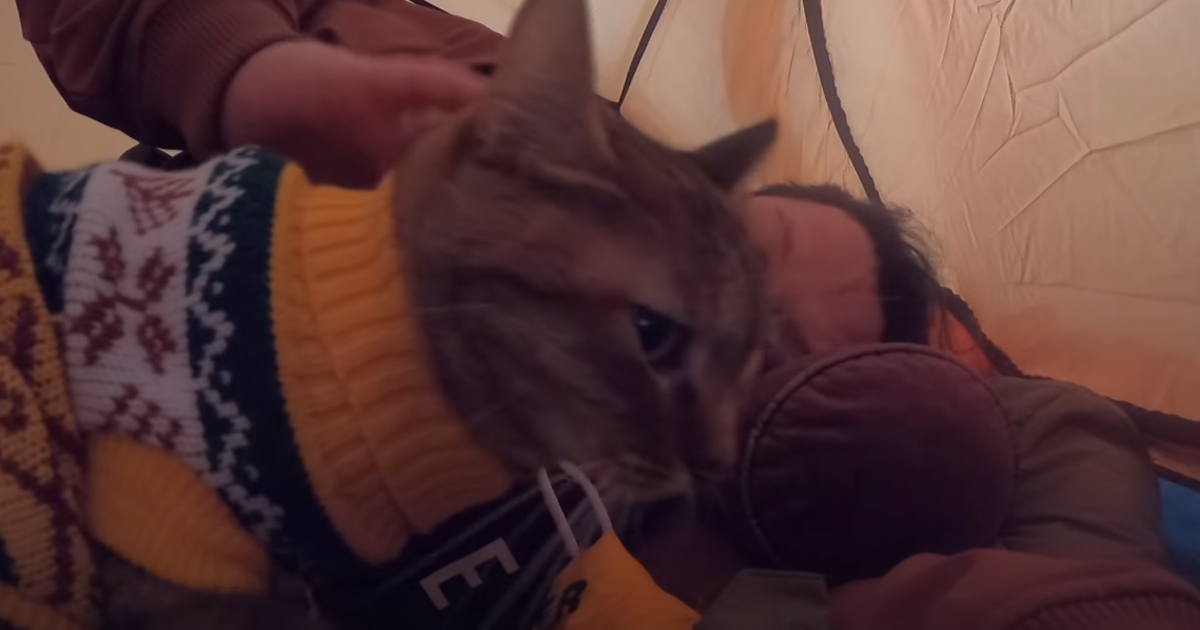
- Keep your cat up-to-date on vaccinations: I ensure my cat is up-to-date on vaccinations against common diseases such as rabies and feline leukemia. I talked to my vet about other vaccines that may be needed based on our itinerary.
- Use flea/tick prevention: To protect my cat from fleas and ticks, I use preventative measures, such as flea/tick collars, topical treatments, and oral medications.
- Check your cat for ticks regularly: After every trip outdoors, I check my cat’s fur regularly. If I find any, I remove them immediately to prevent the transmission of diseases.
- Avoid toxic substances: I keep my cat away from areas where pesticides are used, or poisonous plants grow. If I suspect my cat has ingested something harmful, I contact my vet immediately.
- Protect against injury: To protect myself from injury, I keep my cat on a leash during outdoor activities. I also ensure the areas in the campsite we visit are safe.
Conclusion
Camping with my cat has always been a unique and rewarding experience. It’s an incredible opportunity to bond and explore the great outdoors together. I’ve found that focusing on my cat’s needs and comfort is the key to ensuring our camping trips are fun, safe, and enjoyable for both of us.
I always remember to prepare appropriately, travel safely, and set up camp that provides my cat with a comfortable and secure environment. I’ve learned that it’s crucial to monitor my cat’s health and safety constantly and have a plan for any potential emergencies.
So, if you’re a cat owner like me, why not try it? Grab that cat carrier and embark on a camping adventure with your furry friend today. It’s an experience you won’t forget.
FAQs
Is It OK to Take A Cat Camping?
Yes, both kittens and full-grown cats can sleep in a carrier overnight. Just ensure your cat is used to the carrier before she spends a night in it, and keep things comfortable with a familiar blanket. Also, be sure to let her out in the morning at the time she usually gets up.
How Do You Keep A Cat In A Tent?
If your cat refuses to sleep in a confined space like that, you may choose to keep them on a leash throughout the night. To prevent them from getting away if they were a way out of the tent, secure the leash to a heavy piece of gear within the tent.
